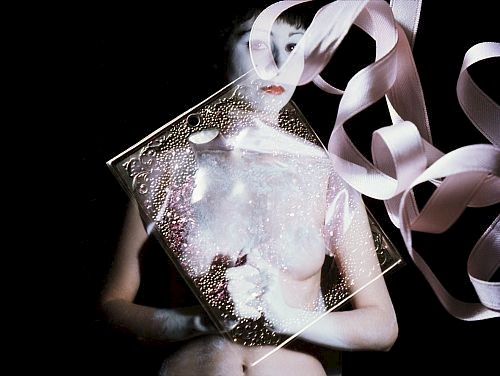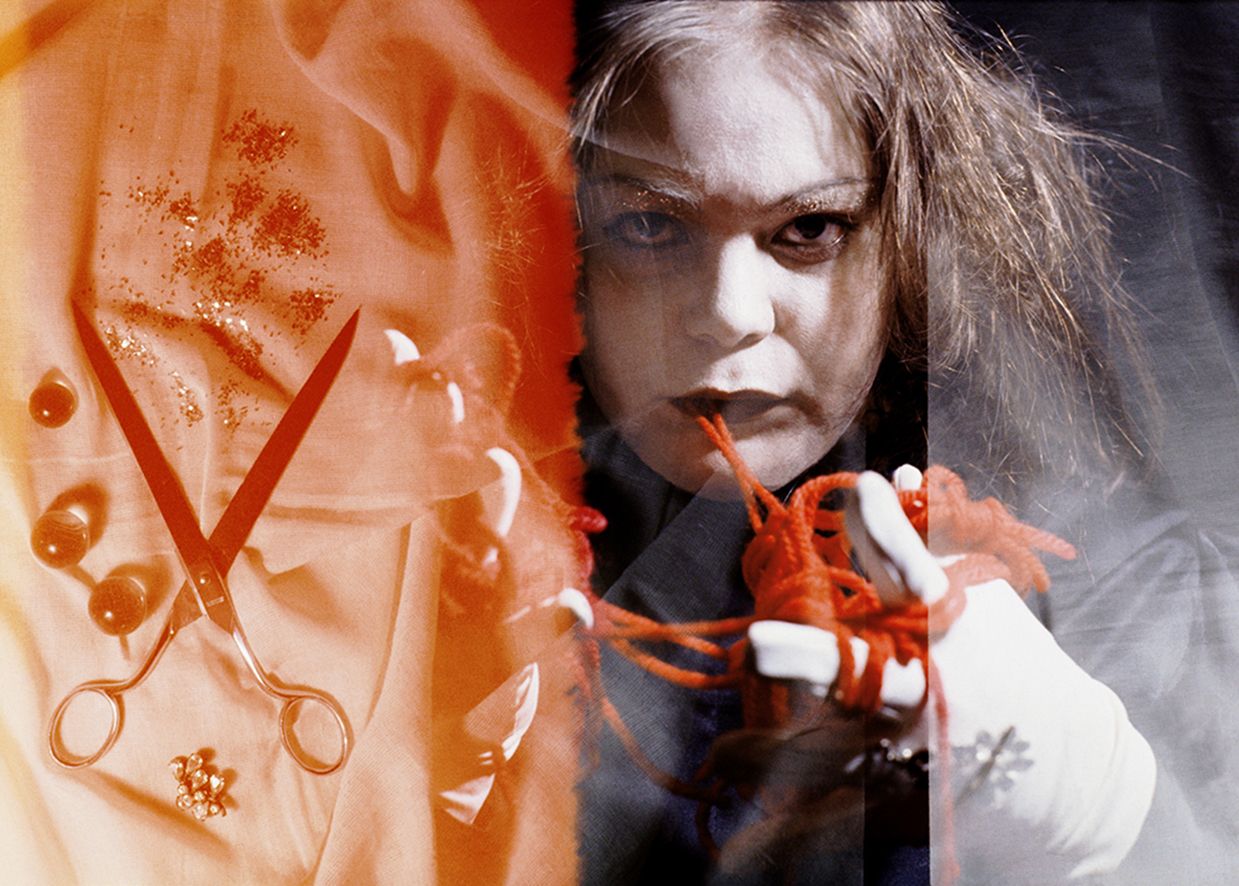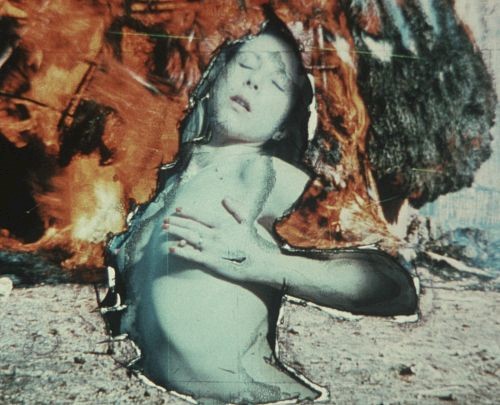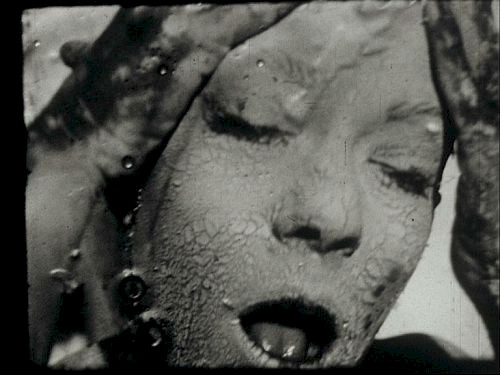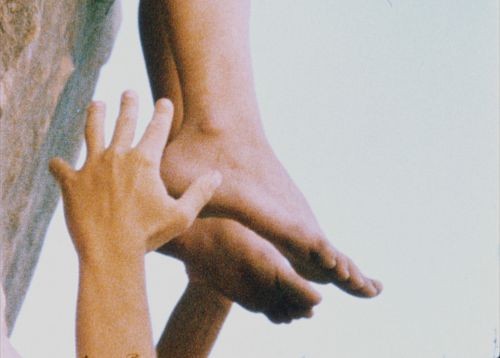L’Enfant qui a pissé des paillettes, was created in 1977 by two brilliant young women from Greece who moved to Paris in 1975. They had acquired at the University of Athens and at the School of Fine Arts of Athens a solid theoretical and practical background in theatrical scenography, plastic arts, literature, aesthetics and philosophy. It is at Saint-Charles, where Maria Klonaris completed her studies in Aesthetics and Art Sciences, that the link was established with experimental cinema. The two young women quickly developed a creative device that synthesized their skills by combining film art, performance art and visual arts.
Unlike many of the young filmmakers who were their contemporaries, Maria Klonaris and Katerina Thomadaki build around their artistic work a discourse with strong aesthetic and political stakes, structured around the notions of “political dimension of the female identity” and of a “bodily cinema”. With constancy and rectitude, they never deviated from their discourse, refusing to be assimilated to this School of the body which does not exist, to support the perverse mechanisms of the juries of festivals, prizes and various postures made to seduce.
In 1976, Double labyrinthe, shot in Super 8, inaugurates a “corporal tetralogy” of which L’Enfant qui a pissé des paillettes is the second part. Defined by its authors as “an action for film, slides and texts” or “film/action”, then later “screening/performance”, it was a mix of slides, super 8 screenings and oral creations. First shown at the Saint-Charles film club in May 1977, the film was selected in Hyères in a context of heated debate, with Maria Klonaris and Katerina Thomadaki refusing the Special Jury Prize awarded to them by a jury composed of Raphaël Bassan, Dominique Noguez and Dominique Chateau. The film was then shown a lot, until the 1975-85 Klonaris/Thomadaki retrospective organized by the J&J Donguy gallery in Paris in 1985. It was never shown again.
Katerina Thomadaki, now alone, agreed to revive this mythical work as a tribute to Maria Klonaris for the closing night of the festival from digital media from Super 8 film and slides.
- Frédéric Tachou
